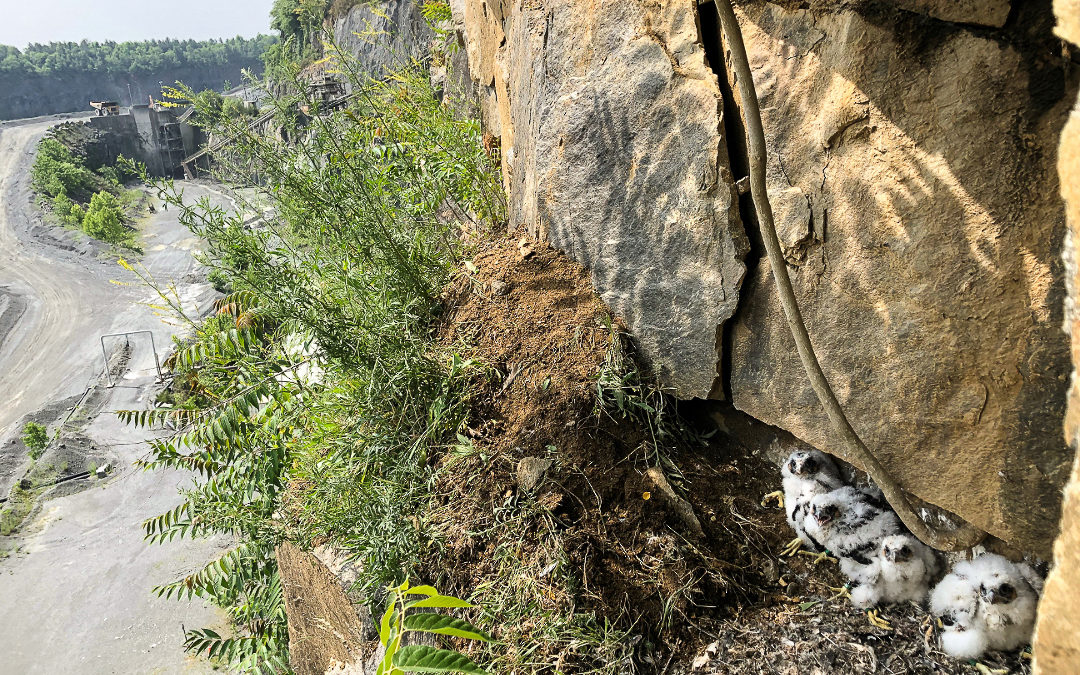Descended from Royalty

Echoes of the Dough Birds
January 12, 2022
Virginia Cormorants Continue Historic Rise
January 13, 2022By Bryan Watts
1/12/2022
When Alan Williams and I repelled down a quarry wall in Ashburn, Virginia to band a brood of peregrines, neither of us had any inkling that the brood had any notable pedigree. It was not until later when the adult male was identified that I recognized that the two males and two females in an eyrie high above the quarry floor were direct descendents of Beauregard, the king of Baltimore.
Following the extirpation of peregrine falcons east of the Mississippi River, Tom Cade (Cornell Laboratory of Ornithology and later Peregrine Fund) would develop and stand up a captive breeding program to repopulate the historic range. Between 1975 and 1985, 307 captive-reared birds were released from sites on the Coastal Plain of Virginia, Maryland, Delaware, and New Jersey with an additional 13 in Washington, D.C. and 5 in coastal North Carolina (releases in Virginia were directed by Mitchell Byrd).
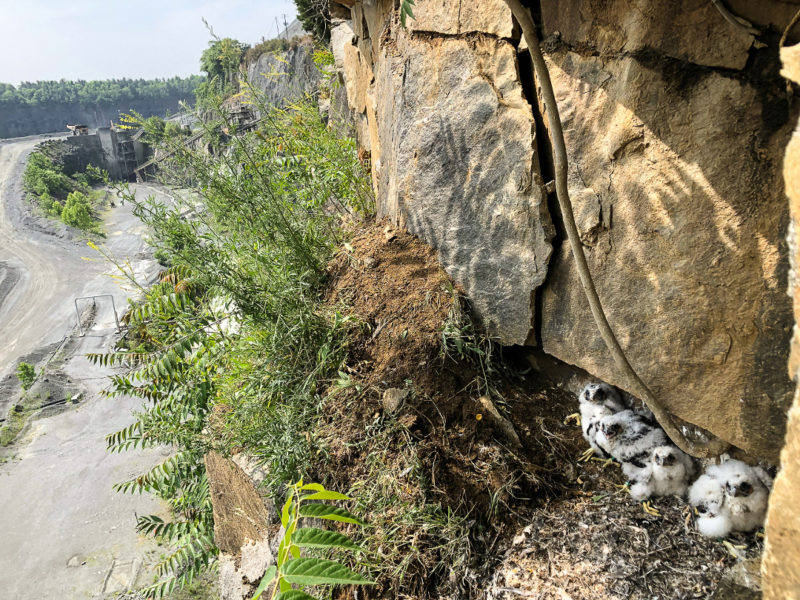
One of the early peregrines released in Maryland was Scarlet. Scarlet was produced in captivity at Cornell and released on a tower in the marsh at Edgewood Arsenal (part of Aberdeen Proving Ground) north of Baltimore in the spring of 1977. Scarlet appeared during the spring of 1978 on the 33rd floor of the United States Fidelity & Guaranty (USF&G) building and was observed from the window by the employees of the insurance company. With 37 floors the building was the highest in the city. Scarlet would see herself in the window and begin going through partial courtship – bowing and “eechuping” to her reflection. Recognizing Scarlet’s attachment to the site, the Peregrine Fund provided two scrapes of gravel on the 33rd floor during the spring of 1979 and went to heroic efforts to provide Scarlet with a mate.
Between 1979 and 1983, the Peregrine Fund offered up a parade of suitors to Scarlet including The Blue Meanie, Misha, Rhett, Percy and Ashley. Scarlet turned up her nose to The Blue Meanie and Misha but in the spring of 1980, bonded with Rhett. Unfortunately, Rhett died in November of 1980 of strychnine poisoning after eating a pigeon from a nearby grain elevator that had eaten poison bait. In 1982 Percy was introduced but did not stay. Ashley, the fifth suitor, did stay and helped Scarlet raise four eyases fostered by the Peregrine Fund. All hopes were high in early 1983 until Ashley was found after being hit by a shotgun blast. He was later rehabbed but after release was hit by a car on the Key Bridge and died. In July of 1983, a wild-hatched bird dubbed Beauregard appeared in the territory and bonded with Scarlet. In 1984, the pair would successfully produce four young.
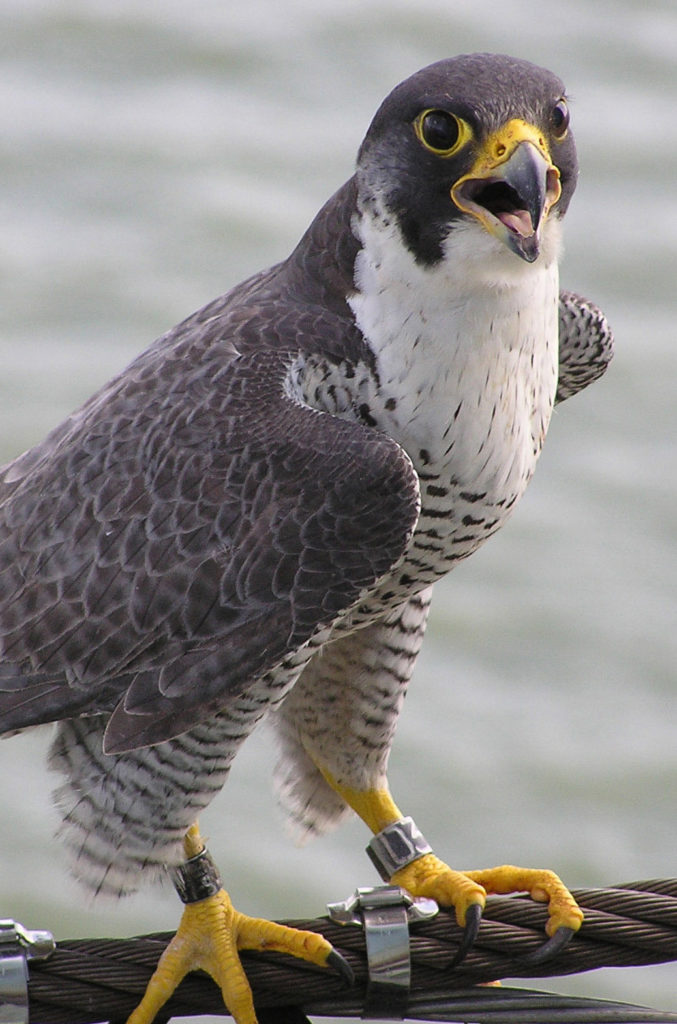
It is hard to overstate the excitement about Scarlet and Beauregard. They were among the first peregrines to nest in the east since the loss of the anatum population and the first to adapt to urban life. Scarlet’s colorful activities were followed closely by the media and public since she first arrived on the USF&G building in 1978. In 1984 Scarlet and Beauregard certainly ruled the skyline in Baltimore. But the 1984 brood that Scarlet produced would be her only one, as she died in September of an infection. Beauregard stayed on.
Four days after the loss of Scarlet, Blythe (a female hatched in New Jersey in 1982) appeared in Baltimore and bonded with Beauregard. Beauregard and Blythe would produce 12 males and 11 females from 1985 through 1991. Blythe disappeared in March of 1992 and was found dead on the rooftop of another building. Two of the young produced by Beauregard and Blythe, including a female produced in 1989 (banded K03K by Craig Koppie and later named Virginia) and a male produced in 1991 (banded R02R by Craig Koppie and later named James), dispersed from Baltimore to Virginia.
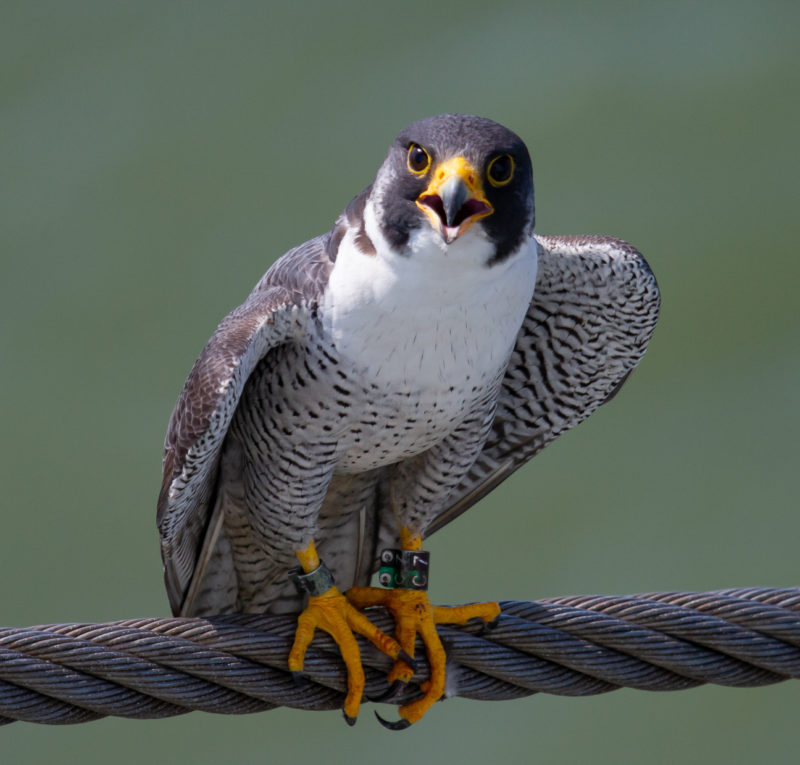
Virginia and James were full siblings (hatched two years apart) that formed a territory on the James River Bridge in Newport News, Virginia. Virginia appeared in Newport News in 1990 and James appeared in 1992. They bred successfully for the first time in 1994 and by the time Virginia was lost in 2005 had produced 31 young together. James continued to hold the territory until he was lost in 2010. One of the young produced by Virginia and James in 2002 was a male banded 7/C by Shawn Padgett.
The grandson of Beauregard (7/C) dispersed from the James River Bridge only a short distance up the James to a ship within the “ghost fleet” of Fort Eustis and nested for the first time in 2006. 7/C nested on the ship through 2010. After the death of James, 7/C inherited the territory on the James River Bridge in 2011. In 2021, in his 20th year, 7/C successfully produced three young with his third female. 7/C is the oldest known falcon to have nested in Virginia and has produced 45 young to date. In 2016, with his second female, 7/C would produce a male banded 31/BM by Bryan and Marian Watts.
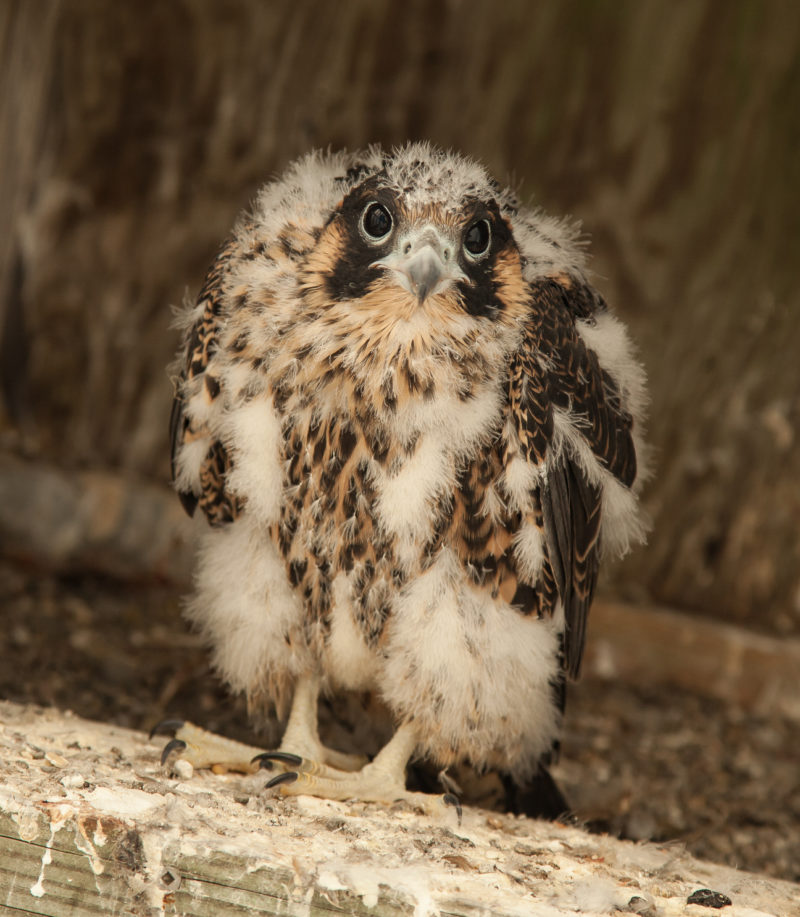
The great grandson of Beauregard (31/BM) dispersed to the Luckstone quarry in Ashburn and nested for the first time in 2019. The broods produced by 31/BM may be linked back directly to the USF&G building in Baltimore and the reign, not so long ago, of Beauregard and Blythe.
Nest Story (for peregrines) is a project started by Kathy Clark from New Jersey Division of Fish and Wildlife’s Endangered & Nongame Species Program with software written and produced by Jim Verhagen. The software allows input of banding and nesting data and is designed to examine genealogy, dispersal and spatial structure and ultimately relatedness. CCB is contributing data to the project in the hope of examining region-scale patterns. Understanding the structure of this recovering population has been an objective from the outset of the captive breeding and hacking program.

